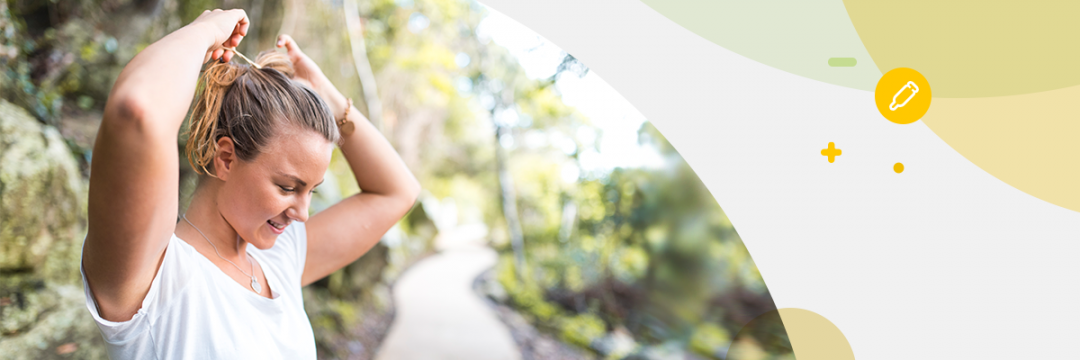Regular exercise helps improve blood sugar management in individuals with type 2 diabetes.[i] It offers health benefits like increased insulin sensitivity, improved muscle strength, and heart health in individuals with type 2 diabetes, too.[ii]
While exercise offers distinct benefits for individuals with diabetes, it can come with challenges if you take insulin. Blood sugar management varies from person to person. Different types of exercise also have different effects on persons with diabetes. This means it’s important to learn more about managing exercise and insulin for the best results.
Blood Sugar and Exercise: What You Need to Know
Exercise does affect your blood sugar. But the effect physical activity has on glucose levels depends on many factors, such as how long you’re active or the type of activity. Exercising can lower blood sugar 24 hours — or even more — after you do a workout. That happens because it makes the body more sensitive to insulin.
Learn how your body and your blood sugar responds when you exercise. Checking blood sugar before and after exercise allows you to learn how your body handles specific activities. Learning your unique patterns can help you prevent highs or lows.
If you take insulin or medicines that make your body make more insulin, you do have the risk of low blood sugar when you work out. That’s specifically a problem if you’re not adjusting carb intake or your insulin dose with exercise.
Tips for Managing Exercise and Insulin
Learning to adjust your food and insulin intake around your workouts helps you enjoy the benefits of exercise safely. Use the following tips for managing exercise and insulin. And don’t forget to speak to your doctor before you start a new exercise plan.
Tip #1 – Check Blood Sugar Before Workouts
If you take insulin or other medicines that may result in low blood sugar, test 15-30 minutes before a workout. Blood sugar levels under 100 mg/dL mean you need to wait to work out. For most people, between 100-250 mg/dL is a safe blood sugar range pre-exercise.[iii]
If blood sugar is above 250 mg/dL, it’s too high for safe exercise. Take measures to correct blood sugar levels and wait to work out until your blood sugar is in the safe range again.[iv]
Tip #2 – Eat Before a Workout
Even if you time insulin doses perfectly with exercise, you still may need to eat extra carbs to prevent lows. Everyone has unique requirements for carbs. Checking blood sugar before, during and after your workout can help you figure out the right plan for you.
Tip #3 – Watch for Symptoms of Low Blood Sugar During Exercise
Watch for the symptoms of low blood sugar when you exercise. If you’ll be doing a long workout, plan to check blood sugar levels every 30 minutes. Checking blood sugar is especially important if you’re increasing the duration or intensity of a workout.
If you start feeling weak, confused, or shaky, stop exercising. Check your blood sugar. If it’s under 70 mg/dL, don’t exercise anymore until you raise your blood sugar.
Tip #4 – Have Emergency Supplies on Hand to Raise Blood Sugar
Always have emergency supplies on hand to raise blood sugar when you exercise. If you have low blood sugar, eat or drink something with around 15 grams of fast-acting carbs to raise levels. Good options include:[v]
- ½ cup of fruit juice
- Glucose gel or tablets
- ½ cup of a non-diet soft drink
- Hard candy (check labels for the number of carbs per serving)
Tip #5 – Check Blood Sugar After Exercise
It’s important to check blood sugar after exercising, too. Don’t just check it immediately; continue checking over the next few hours after exercise. The harder you work out, the longer your blood sugar is affected. You can still have low blood sugar as a result of exercising four to eight hours later.
Exercise comes with excellent health benefits. However, when you have diabetes, testing your blood sugar before, during, and after physical activity is just as important as getting active
Sources
[i] https://care.diabetesjournals.org/content/39/11/2065
[ii] https://care.diabetesjournals.org/content/39/11/2065
[iii] https://www.mayoclinic.org/diseases-conditions/diabetes/in-depth/diabetes-and-exercise/art-20045697
[iv] https://www.mayoclinic.org/diseases-conditions/diabetes/in-depth/diabetes-and-exercise/art-20045697
[v] https://www.mayoclinic.org/diseases-conditions/diabetes/in-depth/diabetes-and-exercise/art-20045697
https://www.diabetes.org/healthy-living/fitness/getting-started-safely/blood-glucose-and-exercise
https://www.jdrf.org/t1d-resources/living-with-t1d/exercise/exercise-and-insulin/
The mySugr website does not provide medical or legal advice. mySugr blog articles are not scientific articles, but intended for informational purposes only.
Medical or nutritional information on the mySugr website is not intended to replace professional medical advice, diagnosis or treatment. Always consult a physician or health care provider with any questions you may have regarding a medical condition.





